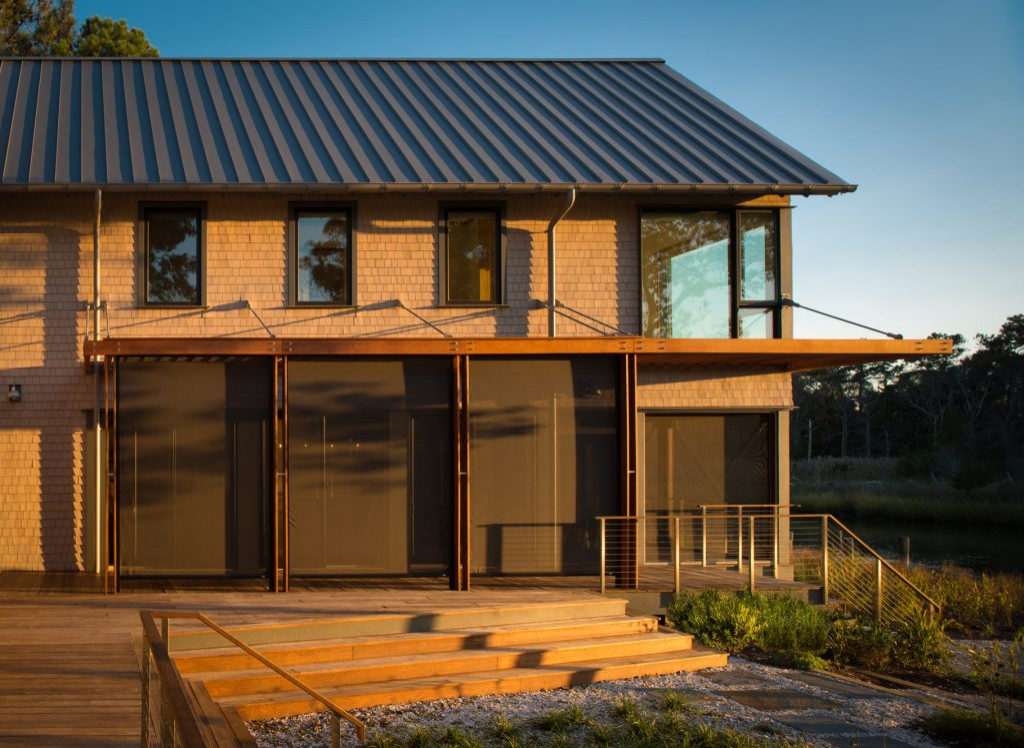Go Greener!







QUESTIONS OUR CLIENTS ASK US
What makes a home “green”? What is a "zero-energy-ready home?
• A “green” home has an energy efficient building envelope.
• A “green” home has energy efficient heating, air conditioning, appliances and lighting.
• A “green” home is built with materials that protect the health of the environment.
• According to the U.S. Department of Energy, a green home is a highly energy-efficient home, often designed to be Zero Energy Ready, meaning a renewable energy system can offset its annual energy use. These homes also focus on reducing water usage, using sustainable materials, and maximizing indoor air quality.
For more information see the U.S. Department of Energy’s Efficient Home Design webpage, and its Zero Energy Ready Home webpage.
What home improvements have tax incentives?
• Improving the energy efficiency of your building envelope can earn tax credits.
• Installing geothermal (ground source) heating and cooling can earn tax credits.
• Installing solar thermal or photovoltaic systems can earn tax credits.
For more information see the U.S. Department of Energy’s Database of State Incentives for Renewable Energy.
Which green design decisions help the environment the most?
• Using less energy and material resources are the most important decisions a person can make.
• Keeping existing building fabric can use far less energy and resources than using new materials.
• Using reclaimed materials can be more environmentally friendly than using new materials.
For more information see the U.S. Green Building Council's Benefits of Geen Building webpage:
What is a geothermal (ground source) heat pump?
• Geothermal energy is low-tech and provides a great return on your investment.
For more information see the U.S. Department of Energy’s Geothermal Technologies web page.
Should I use solar panels?
• The sun is the most readily available renewable resource we have. Every day enough sunlight falls on the planet to power the planet at our current rate of consumption for 16 years.
• Everyone should evaluate the opportunities to produce as much of their own energy as they can afford.
• Every homeowner can evaluate the life-cycle cost of incorporating solar energy (don’t forget to figure in tax incentives) to see if it works for him or her.
For more information see the U.S. Department of Energy’s Homeowner's Guide to Going Solar: and its Photovoltaics webpage.
How can I add more insulation to my house?
• Before adding any insulation to your home you must consider 3 things: thermal insulation, air barrier and the vapor transmission properties of your exterior walls.
• It is wise to hire an expert who can evaluate your home’s thermal and moisture dynamics.
• Doing it wrong can cause serious damage to your property
For more information see How To Insulate an Old House Without Damaging It, and Building Science Corporation's Guidance page and Popular Topics pages.
What products contain formaldehyde and why is it bad for you?
• Any product with glue, such as plywood, particle board, plastic laminate, etc, contains formaldehyde unless it is specifically manufactured and labeled otherwise.
• Moderate exposure to formaldehyde can cause skin, respiratory and liver disorders; chronic exposure can ultimately lead to death.
For more information, see the EPA’s webpage What should I know about formaldehyde and indoor air quality?
What is a VOC?
• ”Volatile Organic Compounds” are harmful chemicals which “off-gas” from certain products.
• VOCs are found in paints, varnishes, solvents, adhesives, caulk, carpet, upholstery, vinyl, air fresheners, cleaning products, gasoline and car exhaust, to name a few.
• Short-term exposure to VOCs can cause eye, nose and throat irritation, nausea, dizziness and asthma; long-term exposure can cause cancer, and liver, kidney and central nervous system damage.
For more information check out the the EPA's What are volatile organic compounds (VOCs) webpage.
How can I save water?
• You can save a lot of water by turning off the shower unless you’re wetting or rinsing; similarly you can save a lot of water by only running the water when you are wetting or rinsing your toothbrush.
• You can save gobs of water by not running the water while you load the dishwasher: fill one of your dirty dishes with slightly soapy water, sponge off the dishes in it, and then load them all.
• Planting native species in your garden saves on irrigation.
• Installing low-flow plumbing fixtures saves the most water with the least change in lifestyle.
For more information visit the EPA’s Water Sense web page.
What about lighting?
• A rule issued in 2007, rolled back by the Trump administration, and updated last year and in effect as of 1 August 2023 by the Biden administration, effectively bans the sale of common incandescent light bulbs. LEDs are more efficient, and last longer, than either fluorescent or incandescent bulbs.
• Considering both lamp life and energy usage, LEDs cost 11% of what incandescents cost, and 47% of what fluorescents cost, to operate.
• For more information visit the the Federal Trade Commission's Lighting Facts webpage.
How can I make my new home or renovation “green?”